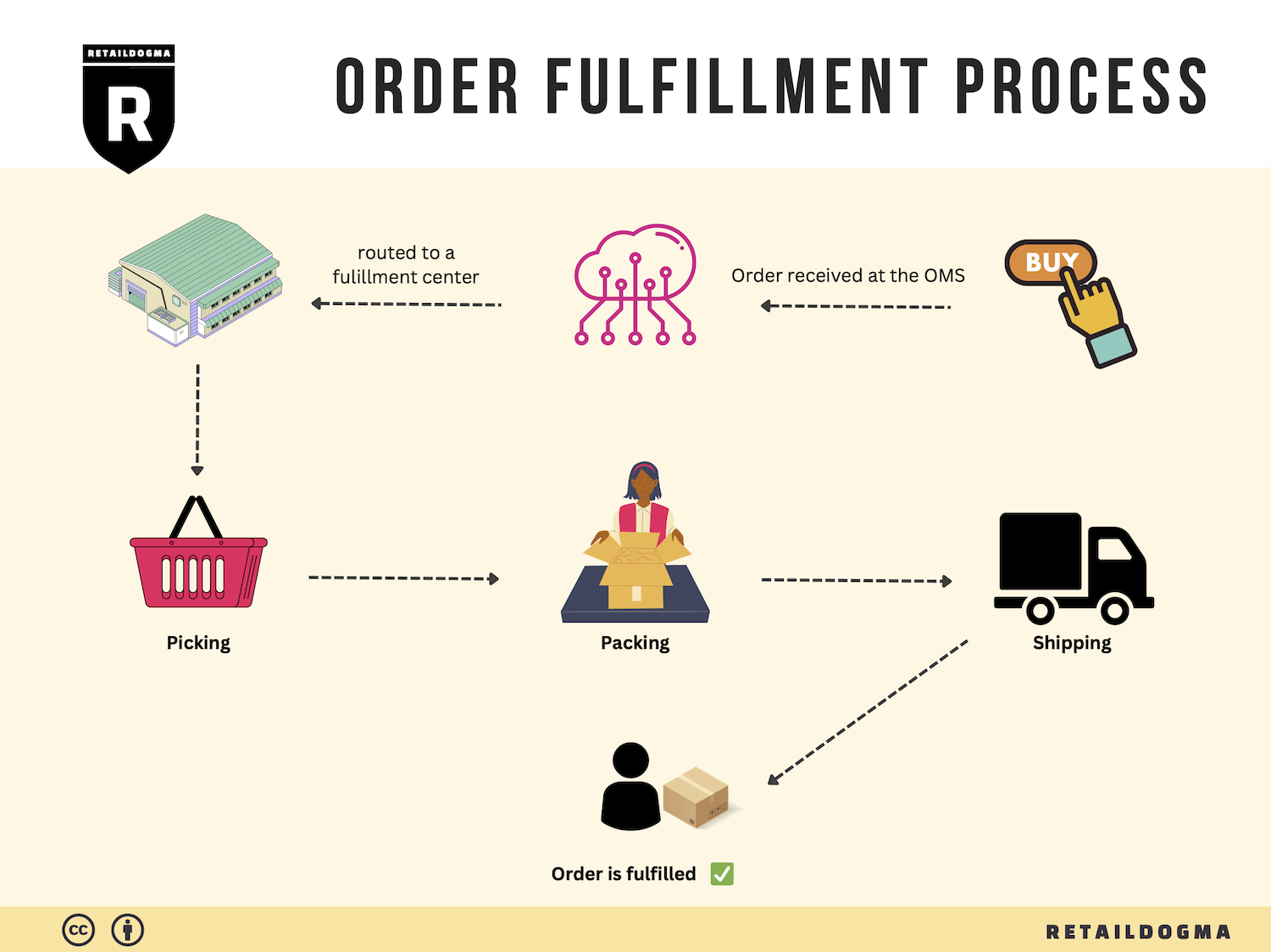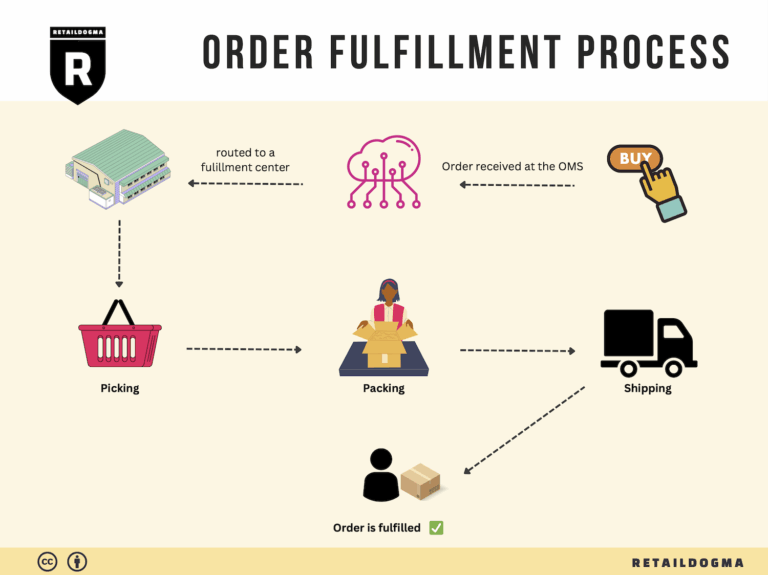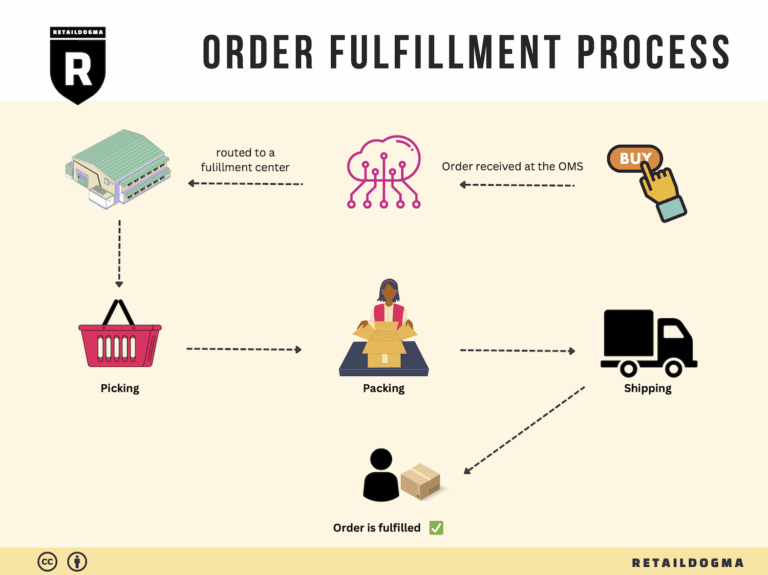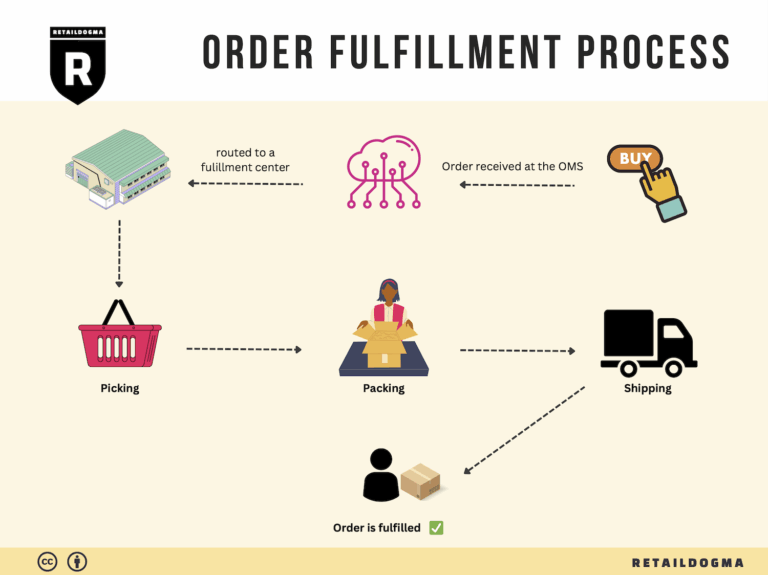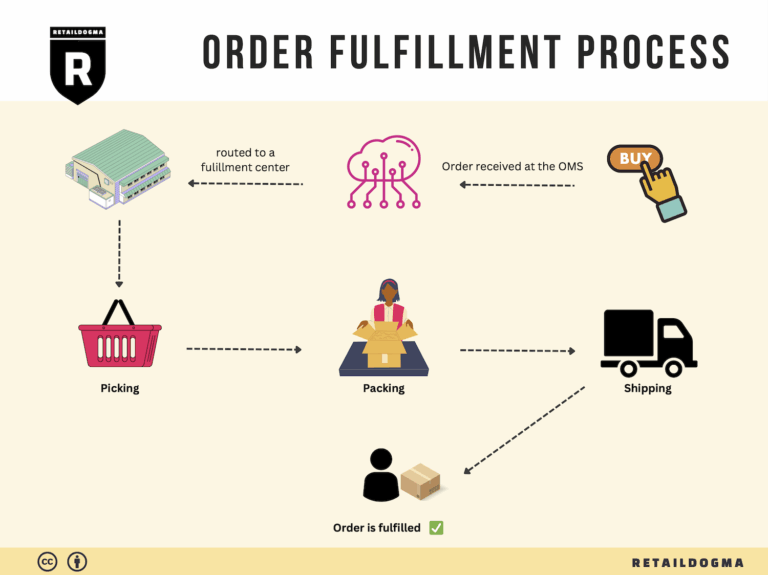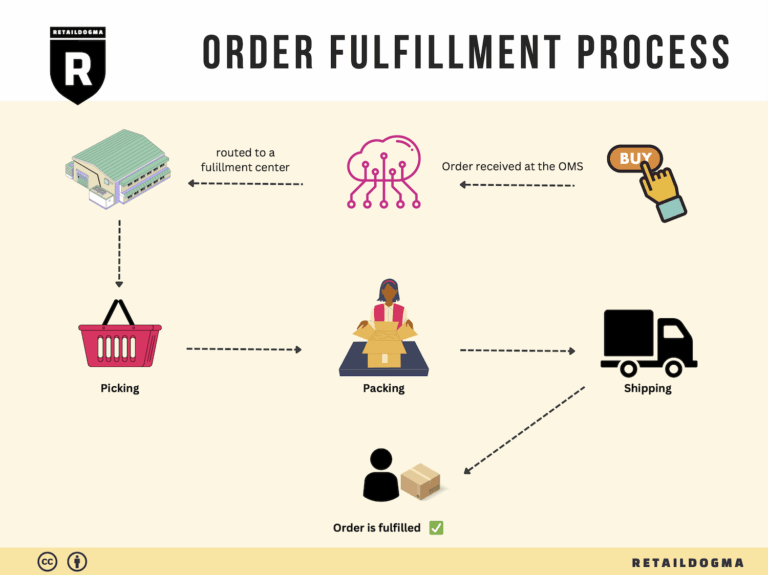Ecommerce Fulfillment Services: The Ultimate Guide (2025)
What is E-commerce Fulfillment? An Introduction for Growing Businesses
Understanding E-commerce Fulfillment: A Guide for Growing Businesses
As an e-commerce business owner, you may often find yourself overwhelmed with the demands of packing and shipping orders. The excitement of growing sales can quickly turn into stress when faced with logistics challenges. Managing inventory, ensuring timely deliveries, and maintaining customer satisfaction can feel like a daunting task. This is where effective e-commerce fulfillment comes into play.
E-commerce fulfillment refers to the process of receiving, storing, packing, and shipping products to customers. It encompasses everything from the moment an order is placed to when it arrives at the customer’s doorstep. For growing businesses, understanding this process is crucial for scaling operations efficiently and maintaining a competitive edge.
In this guide, we will explore the various fulfillment models available to e-commerce businesses, including Third-Party Logistics (3PL) and Fulfillment by Amazon (FBA). Each model has its own set of advantages and challenges, making it important to assess which option aligns best with your business needs. We will also cover the core services involved in fulfillment, such as inventory management, order processing, shipping, and returns handling.
Choosing the right fulfillment partner can significantly impact your business’s success. This guide will provide insights on how to evaluate potential partners based on factors like reliability, technology integration, customer service, and scalability. Additionally, we will discuss pricing structures commonly found in the industry, helping you to understand the cost implications of different fulfillment options and how to budget accordingly.
Our goal is to empower e-commerce businesses to make informed decisions about their logistics operations. By the end of this guide, you will have a clearer understanding of e-commerce fulfillment and the tools necessary to optimize your supply chain. Whether you are a startup looking to establish your logistics framework or an established business aiming to enhance efficiency, this guide will serve as a valuable resource in navigating the complexities of e-commerce fulfillment.

What You’ll Learn In This Guide
- What is E-commerce Fulfillment? An Introduction for Growing Businesses
- The Order Fulfillment Process: From ‘Buy’ Button to Customer’s Door
- Comparing Fulfillment Models: In-House vs. 3PL vs. Dropshipping
- A Deep Dive into Amazon FBA: Pros, Cons, and Who It’s For
- Core Services Offered by Fulfillment Centers
- How to Choose a Fulfillment Partner: A 6-Point Checklist
- Understanding Fulfillment Pricing: A Breakdown of Common Fees
- Frequently Asked Questions (FAQs) about Fulfillment
- Conclusion: Is Outsourcing Fulfillment the Right Move for Your Business?
- Important Disclaimer
The Order Fulfillment Process: From ‘Buy’ Button to Customer’s Door
1. Receiving Inventory
The first step in the order fulfillment process is receiving inventory. Upon arrival at the Amazon Fulfillment Center LAS6 in North Las Vegas, shipments of products are checked against purchase orders to ensure accuracy. This process involves inspecting the condition of goods and logging them into the inventory management system. Each product is assigned a Stock Keeping Unit (SKU), which is a unique identifier that allows for easy tracking throughout the supply chain.
Importance: Proper inventory receiving is crucial because it sets the stage for efficient operations. Accurate inventory counts prevent stock discrepancies that can lead to order fulfillment delays or errors. Additionally, receiving inventory in good condition ensures customer satisfaction and reduces return rates.
2. Warehouse Storage
Once the inventory is received and logged, the next step is warehouse storage. Products are organized strategically within the fulfillment center to maximize space and efficiency. This often involves categorizing items based on size, type, and demand frequency. Advanced inventory management systems are employed to determine optimal storage locations, which can include shelving, bins, or pallets.
Importance: Effective warehouse storage is vital for quick access to items when orders are placed. A well-organized warehouse minimizes the time spent locating products, thus improving overall fulfillment speed. Key terms associated with this step include “slotting” (the process of assigning storage locations) and “FIFO” (First In, First Out), which ensures older inventory is sold first.
3. Order Picking
When a customer places an order, the next step is order picking. Employees use pick lists generated by the inventory management system to collect the necessary items from the warehouse. This process can be done manually or with the aid of automated systems and technology, such as handheld scanners or robots, to increase efficiency.
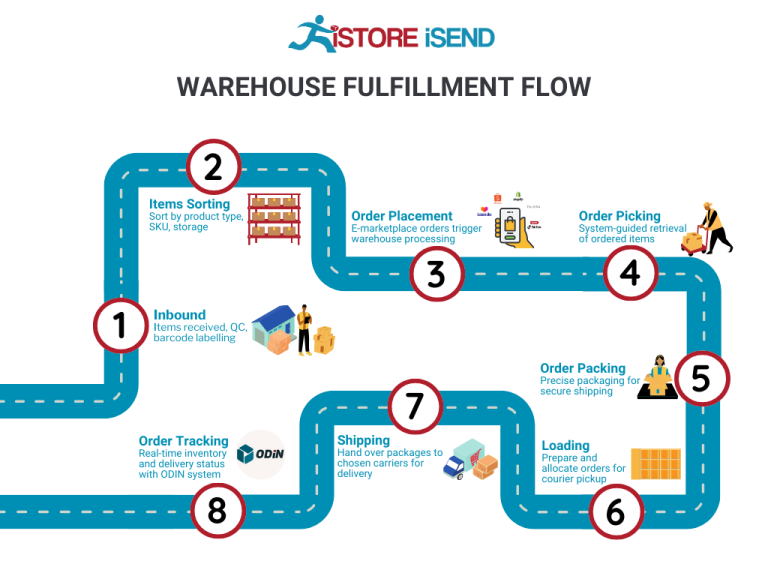
Importance: Order picking is a critical phase because it directly affects the speed and accuracy of order fulfillment. The more efficient the picking process, the faster the order can be shipped to the customer. Common terms here include “pick zone” (areas designated for specific products) and “batch picking,” which allows workers to fulfill multiple orders simultaneously, thereby streamlining the process.
4. Order Packing
After picking, the next step is order packing. Products are brought to a packing station where they are checked for accuracy and packed into boxes. The packing process involves selecting appropriate packaging materials to protect the items during shipping and ensuring that all necessary documentation (like invoices or return labels) is included.
Importance: Packing is crucial for maintaining product integrity and ensuring customer satisfaction. Well-packed orders reduce the likelihood of damage during transit, which can lead to returns and negatively impact the customer experience. Key terms relevant to this step include “dimensional weight” (used for calculating shipping costs based on package size) and “pack slips,” which detail the items included in the shipment.
5. Shipping & Delivery
The final step in the fulfillment process is shipping and delivery. Once orders are packed, they are labeled and sorted for shipment based on destination. Amazon utilizes a vast logistics network, including various shipping carriers, to ensure timely delivery. Tracking information is generated and sent to customers, allowing them to monitor their package’s progress.
Importance: Efficient shipping and delivery are essential for customer satisfaction and retention. Fast and reliable delivery can differentiate a business from its competitors. Key terms here include “last-mile delivery” (the final step of the shipping process) and “shipping carriers,” which refer to the companies responsible for transporting packages.
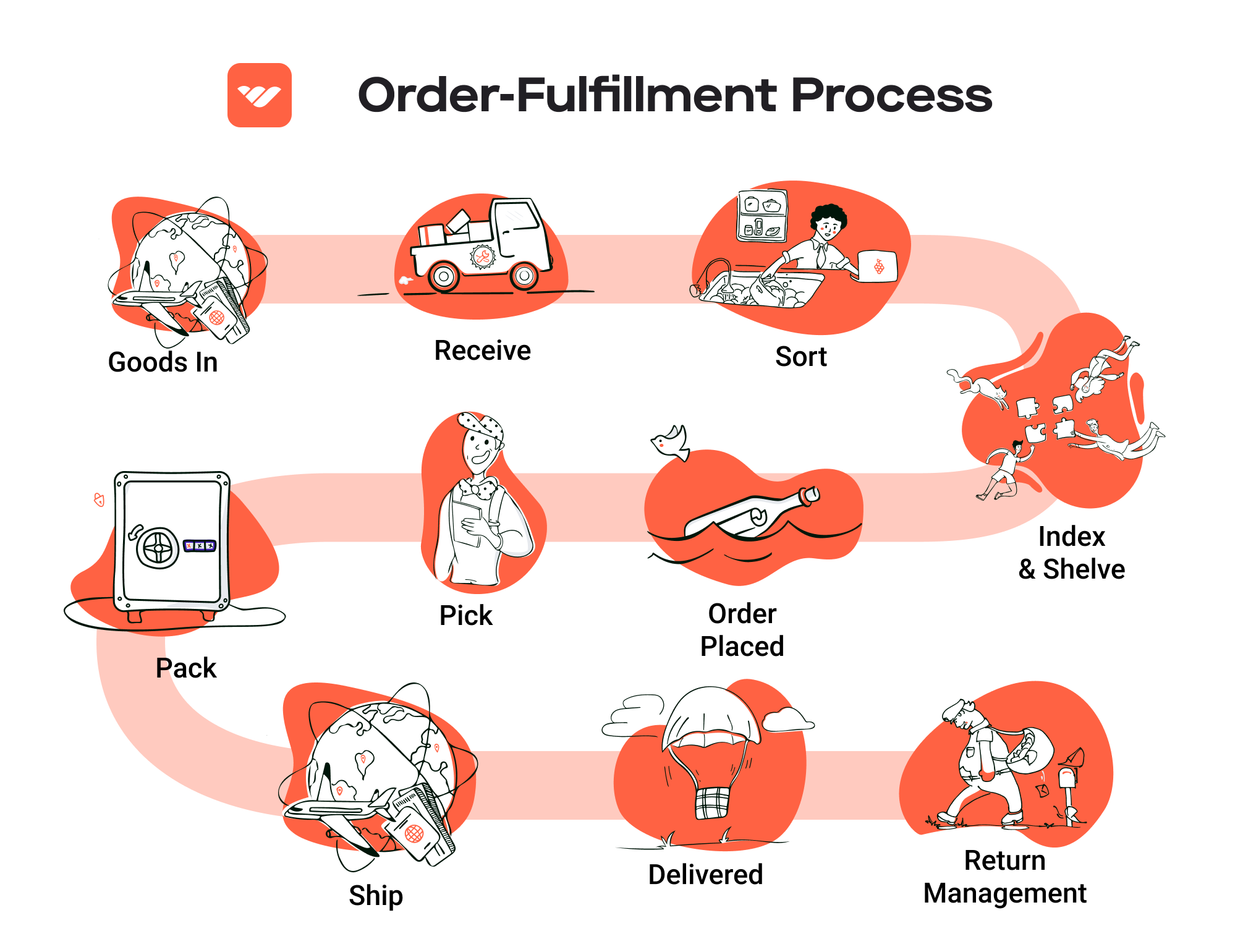
In conclusion, understanding and optimizing each step of the order fulfillment process—from receiving inventory to shipping and delivery—can significantly enhance operational efficiency and customer satisfaction. As e-commerce businesses scale, leveraging technology and best practices in these areas will be critical to maintaining a competitive edge in the market.
Comparing Fulfillment Models: In-House vs. 3PL vs. Dropshipping
Fulfillment Models Comparison
| Model | Who Handles Inventory | Best For (Business Stage) | Key Advantage | Key Disadvantage |
|---|---|---|---|---|
| In-House Fulfillment | The business itself | Established businesses | Complete control over inventory and processes | High overhead costs and resource demands |
| Third-Party Logistics (3PL) | A third-party provider | Growing businesses | Scalability and reduced operational burden | Less control over inventory and processes |
| Dropshipping | Suppliers | Startups and small businesses | Low upfront investment | Lower profit margins and reliance on suppliers |
In-House Fulfillment
In-house fulfillment involves managing your own inventory and logistics operations within your business. This model is typically adopted by established businesses that have the resources to invest in storage, technology, and personnel. The primary advantage of in-house fulfillment is the complete control it provides over inventory management, order processing, and customer service. Businesses can tailor their logistics to meet specific needs, ensuring a consistent customer experience. However, this model also comes with significant drawbacks, such as high overhead costs related to warehousing, staffing, and technology investments. Additionally, scaling operations can be challenging, requiring substantial capital and resources.
Third-Party Logistics (3PL)
Third-party logistics (3PL) providers offer a comprehensive solution for businesses looking to outsource their logistics operations. In this model, a third-party company handles inventory storage, order fulfillment, and shipping on behalf of the business. This option is particularly beneficial for growing businesses that need to scale operations quickly without the burden of managing logistics internally. The key advantage of using a 3PL is the ability to leverage the provider’s expertise, technology, and network, which can significantly enhance efficiency and reduce operational costs. However, businesses may face challenges related to less control over their inventory and fulfillment processes, which can impact customer satisfaction if not managed properly.
Dropshipping
Dropshipping is a fulfillment model where the retailer does not keep products in stock but instead transfers customer orders directly to a supplier who then ships the products to the customer. This model is ideal for startups and small businesses looking to minimize upfront investments in inventory and warehousing. The primary advantage of dropshipping is the low barrier to entry, as it requires minimal capital to get started. Retailers can offer a wide range of products without the risk of unsold inventory. However, dropshipping also comes with significant disadvantages, including lower profit margins and a lack of control over product quality and shipping times. Retailers are heavily reliant on suppliers, which can lead to inconsistencies in service that may ultimately affect customer satisfaction.
Conclusion
Choosing the right fulfillment model is crucial for e-commerce success. Each option—whether in-house fulfillment, third-party logistics, or dropshipping—has its own set of advantages and disadvantages that cater to different business stages and needs. As an e-commerce business owner or operations manager, understanding these models can help you make informed decisions that align with your growth strategy, operational capabilities, and customer expectations. By carefully evaluating your resources, market demands, and long-term goals, you can select the fulfillment approach that positions your business for sustainable growth and efficiency.
A Deep Dive into Amazon FBA: Pros, Cons, and Who It’s For
Understanding Fulfillment by Amazon (FBA)
Fulfillment by Amazon (FBA) is a service offered by Amazon that enables sellers to store their products in Amazon’s fulfillment centers. Amazon then takes care of storage, packaging, and shipping on behalf of the sellers. This service allows e-commerce businesses to leverage Amazon’s vast logistics network and customer base, making it easier to reach a wider audience and scale operations.
When a customer places an order for a product fulfilled through FBA, Amazon handles everything from processing the order to shipping it directly to the customer. Additionally, FBA products are eligible for Amazon Prime, which can significantly enhance visibility and sales potential for sellers.
How FBA Works
-
Sign Up and Set Up: Sellers must create an Amazon seller account and enroll in the FBA program. Once enrolled, they can list their products as FBA items.
-
Shipping Inventory to Amazon: Sellers prepare their products for shipment to Amazon’s fulfillment centers. This includes labeling products according to Amazon’s guidelines. Once labeled, sellers send their inventory to the designated fulfillment centers.
-
Storage: Amazon stores the inventory in their warehouses until it is sold. Sellers can monitor inventory levels through their Amazon seller dashboard.
-
Order Fulfillment: When a customer orders a product, Amazon picks, packs, and ships the item on behalf of the seller. The seller does not need to handle any physical product management post-shipment.
-
Customer Service and Returns: Amazon also manages customer service inquiries and handles returns for FBA orders, which simplifies the process for sellers.
Pros of Using FBA
Prime Eligibility
Products fulfilled by Amazon are automatically eligible for Amazon Prime, which allows sellers to tap into a large customer base that values fast and free shipping. This can significantly enhance sales and visibility since Prime members tend to prefer Prime-eligible products.
Customer Trust
Amazon’s brand recognition and trustworthiness can translate into increased sales for FBA sellers. Customers often feel more secure purchasing items fulfilled by Amazon, knowing they will receive reliable service and support.
Multi-Channel Fulfillment
FBA allows sellers to fulfill orders from other sales channels, such as their own websites or other marketplaces, using Amazon’s logistics network. This capability can streamline operations and improve delivery times across various sales platforms.
Simplified Operations
FBA takes care of the complexities of storage, packing, and shipping, freeing up sellers to focus on other aspects of their business, such as marketing and product development.
Access to Amazon’s Global Network
Using FBA gives sellers access to Amazon’s extensive distribution network, making it easier to reach customers in different regions and potentially expand internationally.
Cons of Using FBA
High Fees
One of the primary drawbacks of FBA is the cost. Amazon charges storage fees based on the volume of inventory stored and fulfillment fees for each item sold. These costs can add up, particularly for sellers with low margins or those who have slow-moving inventory.
Strict Inventory Rules
Sellers must adhere to Amazon’s strict inventory management policies. This includes guidelines on labeling, packaging, and product condition. Non-compliance can result in additional fees or removal of inventory.
Commingling Risks
FBA uses a commingling process where inventory from multiple sellers is stored together. This can pose risks if a seller’s product is mixed with defective or counterfeit items from other sellers, potentially leading to negative customer experiences and reputational damage.
Limited Control Over Shipping
While Amazon handles logistics, sellers have limited control over the shipping process. This can be problematic if there are delays or issues that the seller wishes to address directly with customers.
Potential for Overhead
Sellers must ensure they have adequate inventory levels to meet demand. However, excessive inventory can lead to high storage fees, especially during peak seasons. Balancing inventory levels is crucial but can be challenging.
Who is FBA Best For?
FBA is particularly beneficial for:
-
Small to Medium-Sized E-commerce Businesses: Those looking to scale quickly without investing heavily in logistics infrastructure can leverage FBA’s services.
-
New Sellers: Entrepreneurs just starting may find FBA advantageous as it allows them to focus on product sourcing and marketing rather than logistics.
-
Businesses with High Sales Volume: Sellers with a steady flow of orders can benefit from the efficiencies of FBA, offsetting the high fees with increased sales.
-
Sellers with Limited Shipping Capabilities: Businesses that do not have the resources to manage shipping and customer service can rely on FBA to handle these aspects effectively.
-
Multi-Channel Sellers: Those selling on multiple platforms can streamline their fulfillment processes by using FBA for all orders.
In summary, Fulfillment by Amazon offers a comprehensive solution for e-commerce sellers looking to enhance their operational efficiency and reach a larger customer base. However, potential users must weigh the benefits against the associated costs and risks to determine if FBA aligns with their business goals.
Core Services Offered by Fulfillment Centers
Inventory Management & Warehousing
Inventory management and warehousing are foundational services offered by fulfillment centers, including those like Amazon Fulfillment Center LAS6. This service involves the systematic tracking and storage of products within a warehouse environment. Fulfillment centers utilize sophisticated inventory management systems that integrate with e-commerce platforms, allowing business owners to monitor stock levels in real-time.
Benefits:
1. Reduced Overhead Costs: By outsourcing warehousing needs, e-commerce businesses can save on the costs associated with maintaining their own storage facilities, such as rent, utilities, and staffing.
2. Optimized Stock Levels: Advanced inventory management systems help businesses avoid stockouts and overstock situations by providing insights into sales trends and inventory turnover rates.
3. Scalability: As businesses grow, fulfillment centers can easily adjust storage space and inventory levels, enabling seamless scaling without the hassle of moving to a larger location.
Pick and Pack Services
Pick and pack services are crucial in the fulfillment process, where orders are picked from the warehouse shelves and packed for shipment. This service streamlines the order fulfillment process by ensuring that products are accurately selected and efficiently packaged, ready for delivery to customers.
Benefits:
1. Increased Efficiency: Fulfillment centers employ trained staff and advanced technology, such as barcode scanning and automated picking systems, to enhance speed and accuracy in order processing.
2. Error Reduction: With dedicated pick and pack operations, the likelihood of shipping errors decreases significantly. This leads to improved customer satisfaction and reduced return rates.
3. Faster Shipping Times: By leveraging strategic locations, fulfillment centers can expedite shipping, allowing businesses to offer quicker delivery options to their customers, a vital factor in today’s e-commerce landscape.
Kitting and Assembly
Kitting and assembly involve combining various products into a single package or preparing items for sale in a specific configuration. This service is particularly beneficial for e-commerce businesses that offer bundles, promotional packages, or products requiring assembly before shipment.
Benefits:
1. Enhanced Product Offering: Kitting allows businesses to create unique product bundles, enhancing their market appeal and encouraging customers to purchase more items at once.
2. Time Savings: By outsourcing kitting and assembly, businesses can focus on core activities such as marketing and customer engagement, rather than spending valuable time on manual assembly processes.
3. Improved Customer Experience: When products arrive pre-assembled or in attractive bundles, it enhances the unboxing experience for customers, potentially increasing repeat purchases and brand loyalty.
Returns Management (Reverse Logistics)
Returns management, or reverse logistics, is an essential service provided by fulfillment centers that handles the processing of returned items. This service includes inspecting, restocking, and managing the logistics associated with returns, ensuring that products can be efficiently reintroduced into inventory or processed for resale.
Benefits:
1. Streamlined Returns Process: Efficient returns management minimizes the hassle for customers and ensures that returns are processed quickly, maintaining customer satisfaction even when issues arise.
2. Cost Management: By managing returns effectively, fulfillment centers help businesses recover value from returned products, reducing losses associated with unsold inventory.
3. Data Insights: Returns management provides valuable data on product performance and customer preferences, enabling businesses to make informed decisions about inventory, product offerings, and marketing strategies.
In summary, partnering with a fulfillment center like Amazon Fulfillment Center LAS6 can significantly enhance an e-commerce business’s operations through expert inventory management, efficient pick and pack services, effective kitting and assembly, and streamlined returns management. These services not only improve operational efficiency but also contribute to a better customer experience, ultimately supporting the growth and scalability of the business. By leveraging these core services, e-commerce entrepreneurs can focus on strategic initiatives while ensuring that their logistics and fulfillment processes run smoothly.
How to Choose a Fulfillment Partner: A 6-Point Checklist
Location & Warehouse Network
Importance:
The location of your fulfillment partner is critical for ensuring timely delivery to your customers. Proximity to your target markets can significantly reduce shipping times and costs. A well-distributed warehouse network can provide flexibility and faster service, especially during peak seasons.
Questions to Ask:
– Where are your warehouses located, and how does that align with our customer base?
– Can you provide coverage for all our target shipping regions?
– What are the average shipping times from your warehouses to key destinations?
– Do you have plans for expanding your warehouse network in the near future?
Technology & Integrations
Importance:
Modern e-commerce relies heavily on technology for inventory management, order processing, and shipping. A fulfillment partner that utilizes advanced technology can streamline operations, reduce errors, and improve overall efficiency. Integration with your existing systems (e.g., e-commerce platforms, inventory management tools) is essential for seamless operations.
Questions to Ask:
– What technology platforms do you use for order management and inventory tracking?
– Can your systems integrate with our current e-commerce platforms (e.g., Shopify, WooCommerce)?
– How do you handle data security and privacy?
– Are there any additional costs associated with technology integrations?
Specializations (e.g., Cold Storage, Oversized Items)
Importance:
Not all fulfillment centers are equipped to handle specific types of products. If your business deals with specialized items—such as perishable goods requiring cold storage or oversized products—you’ll need a partner with the right capabilities. Understanding their specialties will help ensure your products are stored and handled correctly.
Questions to Ask:
– What types of products do you specialize in handling?
– Do you have facilities for cold storage or special handling?
– How do you manage the storage and shipping of oversized or fragile items?
– Can you accommodate specific packaging requirements for our products?
Scalability & Capacity
Importance:
As your business grows, your fulfillment needs will change. A good fulfillment partner should be able to scale operations to meet increasing demand without sacrificing service quality. Assessing their capacity to handle seasonal spikes or growth projections is crucial for long-term success.
Questions to Ask:
– What is your current capacity, and how do you plan to accommodate growth?
– How do you handle seasonal fluctuations in order volume?
– Are there limits to the number of SKUs or order sizes you can manage?
– Can you provide examples of how you’ve scaled for other clients in the past?
Pricing and Contracts
Importance:
Understanding the pricing structure and contractual obligations of a fulfillment partner is essential for budgeting and financial planning. Transparent pricing models help avoid unexpected costs and ensure you are getting the best value for your investment.
Questions to Ask:
– What is your pricing structure (e.g., per order, per item, monthly fees)?
– Are there any hidden fees (e.g., storage fees, handling fees)?
– What is the minimum contract length, and what are the terms for termination?
– Can you provide a detailed breakdown of costs for our specific needs?
Customer Support & Reviews
Importance:
Reliable customer support is vital for addressing issues that may arise during the fulfillment process. A partner with strong customer service can quickly resolve problems, ensuring a smooth operation. Additionally, researching reviews and testimonials can provide insights into their reliability and service quality.
Questions to Ask:
– What customer support options do you offer (e.g., phone, email, chat)?
– What are your response times for support inquiries?
– Can you provide references or case studies from current or past clients?
– How do you handle service disruptions or order issues?
Conclusion
Choosing the right fulfillment partner is a pivotal decision that can significantly impact your e-commerce operations. By carefully evaluating potential partners through this checklist, you can identify the best fit for your business needs, ensuring efficient logistics and satisfied customers. Remember to maintain open communication throughout the selection process and don’t hesitate to ask for clarifications on any concerns. Taking the time to choose wisely will pay dividends as your business scales.
Understanding Fulfillment Pricing: A Breakdown of Common Fees
Initial Setup Fees
When engaging with a fulfillment center, the first financial consideration is often the initial setup fee. This fee covers the costs associated with onboarding your business into the fulfillment system. It typically includes the creation of your account, integration with your e-commerce platform, and any necessary training on how to use the system effectively.
The calculation of initial setup fees can vary significantly between providers. Some fulfillment centers may charge a flat fee, while others might base their charges on the complexity of your inventory management needs or the volume of products you plan to store. As a business owner, it’s essential to inquire about any hidden costs associated with this process, such as software integration fees or training sessions, to avoid surprises down the line.
Receiving Fees
Receiving fees are incurred when your products arrive at the fulfillment center. These charges cover the labor and resources needed to unload, inspect, and process your inventory before it is stored.
Typically, receiving fees are calculated based on the number of units received or the total weight of the shipment. For instance, a fulfillment center may charge a set fee per pallet or a per-item fee for each product processed. Understanding this fee structure is crucial for budgeting, especially if you frequently send large shipments to the fulfillment center. To minimize costs, consider consolidating shipments whenever possible to reduce the frequency of receiving fees.
Storage Fees (per pallet/bin)
Storage fees are a recurring cost that businesses must account for when using a fulfillment center. These fees are charged for the space your inventory occupies within the warehouse and are typically calculated on a monthly basis, either per pallet or per cubic foot/bin.
The pricing model may vary based on the seasonality of your inventory. For instance, during peak seasons (such as holidays), storage fees may increase due to higher demand for warehouse space. Additionally, if your products are slow-moving, some fulfillment centers may impose long-term storage fees after a specific period. To manage storage costs effectively, keep a close eye on your inventory turnover rates and adjust your stock levels accordingly.
Pick & Pack Fees (per item/order)
Pick and pack fees are charged for the labor involved in retrieving items from storage and preparing them for shipment. This fee structure can vary widely, with some fulfillment centers charging a flat fee per order and others applying a fee per item within that order.
Understanding how pick and pack fees are calculated is vital for pricing your products competitively. For example, if you sell a product that requires multiple items to be packed together, the cumulative pick and pack fees could add up quickly. To mitigate these costs, consider offering bundled products or optimizing your order sizes to reduce the number of individual picks required for each shipment.
Shipping Fees
Shipping fees are often the most significant expense in the fulfillment process. These fees are determined by various factors, including the weight and dimensions of the package, the shipping method selected, and the destination. Fulfillment centers typically have partnerships with various carriers, which can influence the rates offered.
It’s essential to understand that shipping fees can vary not only by carrier but also by the service level (e.g., standard vs. expedited shipping). Additionally, some fulfillment centers may offer discounted shipping rates based on volume, so negotiating favorable terms can be beneficial as your business scales. To manage shipping costs effectively, consider integrating a shipping software solution that can help compare rates across carriers and optimize your shipping strategy.
Tips for Getting an Accurate Quote
-
Provide Detailed Information: When requesting quotes, offer detailed information about your products, including dimensions, weights, and expected order volumes. This information helps fulfillment centers provide a more accurate estimate.
-
Ask About Hidden Fees: Inquire about any potential hidden fees that may not be included in the initial quote, such as long-term storage fees or additional handling charges.
-
Compare Multiple Fulfillment Centers: Don’t settle for the first quote you receive. Compare offers from multiple fulfillment centers to find the best combination of service and pricing that aligns with your business needs.
-
Consider Your Growth Potential: Choose a fulfillment partner that can scale with your business. Discuss future growth plans and ensure that the fulfillment center can accommodate increased order volumes without significantly raising fees.
-
Negotiate Terms: If you anticipate high order volumes or long-term partnerships, don’t hesitate to negotiate the terms of your agreement, including pricing structures and service levels.
By understanding these common fees and how they are calculated, e-commerce business owners can make informed decisions when selecting a fulfillment partner, ultimately leading to more efficient operations and improved profitability.
Frequently Asked Questions (FAQs) about Fulfillment
1. What is Amazon Fulfillment Center LAS6?
Amazon Fulfillment Center LAS6 is a logistics facility located at 4550 Nexus Way, North Las Vegas, NV. This center is part of Amazon’s extensive network designed to streamline the storage, packing, and shipping of products, allowing for rapid delivery and exceptional customer service.
2. How does Amazon LAS6 handle order fulfillment?
At Amazon LAS6, order fulfillment involves receiving inventory, storing it efficiently, and picking, packing, and shipping products as orders are placed. The center employs advanced technology and automation to ensure quick processing times and accuracy in order handling.
3. What are the benefits of using Amazon Fulfillment Center LAS6 for my business?
Using Amazon LAS6 offers several advantages:
– Rapid Shipping: Orders are processed quickly, often resulting in same-day or next-day delivery.
– Scalability: As your business grows, the fulfillment center can accommodate increased order volumes without the need for additional infrastructure.
– Customer Trust: Leveraging Amazon’s brand can enhance customer confidence in your business.
4. What’s the difference between a warehouse and a fulfillment center?
A warehouse primarily focuses on the storage of goods, while a fulfillment center specializes in the entire process of order fulfillment. Fulfillment centers manage inventory, process orders, package products, and ship them directly to customers, often incorporating technology to optimize these processes.
5. What is a 3PL (Third-Party Logistics)?
A 3PL, or third-party logistics provider, is a company that offers outsourced logistics services, including warehousing, transportation, and order fulfillment. By partnering with a 3PL, businesses can reduce overhead costs and focus on their core operations while leveraging the expertise of logistics professionals.
6. How much do fulfillment services cost?
The cost of fulfillment services can vary significantly based on several factors, including:
– Storage Fees: Charged per cubic foot or pallet.
– Pick and Pack Fees: Fees incurred for each item picked and packed for shipping.
– Shipping Costs: Varies based on the destination and carrier used.
Typically, businesses should anticipate costs between $2 to $5 per order, but this can fluctuate based on volume and service level.
7. Can I track my inventory at Amazon LAS6?
Yes, businesses using Amazon Fulfillment Center LAS6 can track their inventory in real-time using Amazon’s seller tools. This allows you to monitor stock levels, order status, and shipping progress, ensuring you maintain optimal inventory management.
8. What types of products can be fulfilled at LAS6?
Amazon LAS6 can handle a wide range of products, from consumer electronics to household goods. However, certain restrictions may apply to hazardous materials or perishable items. It’s essential to review Amazon’s guidelines for specific product categories before sending inventory.
9. How do returns work through Amazon Fulfillment Center LAS6?
Returns are processed through Amazon’s returns management system. Customers can initiate returns online, and the fulfillment center will handle the return shipping and restocking of items. This streamlined process helps maintain customer satisfaction and reduces the burden on your operations.
10. How do I get started with Amazon Fulfillment Center LAS6?
To start using Amazon LAS6 for your fulfillment needs, you will need to create an Amazon Seller account, list your products, and set up your fulfillment preferences. Once your inventory is sent to the fulfillment center, Amazon will handle the rest of the order processing and shipping for you.
Conclusion: Is Outsourcing Fulfillment the Right Move for Your Business?
Evaluating the Benefits of Outsourcing Fulfillment
Outsourcing fulfillment can be a transformative decision for e-commerce businesses looking to scale efficiently. One of the most compelling benefits is the significant time savings it offers. By delegating storage, packing, and shipping tasks to a specialized fulfillment partner, business owners can redirect their focus towards strategic growth initiatives, customer engagement, and product development. This shift not only enhances productivity but also allows for a more agile response to market demands.
Scalability is another critical advantage of leveraging fulfillment services. As your sales volume fluctuates, a robust fulfillment partner can easily adjust to your changing needs, ensuring that your operations remain streamlined during peak seasons without the burden of excess infrastructure costs. This flexibility is vital for maintaining a competitive edge in the fast-paced e-commerce landscape.
Moreover, fulfillment centers bring specialized expertise and technology to the table. With advanced logistics systems and experienced staff, these partners can enhance order accuracy, reduce shipping times, and improve overall customer satisfaction. This expertise is particularly beneficial for businesses that may not have the resources or knowledge to manage complex logistics independently.
However, the success of outsourcing fulfillment hinges on selecting the right partner. A thorough evaluation of potential providers is essential to ensure alignment with your business goals and values. Look for partners that demonstrate reliability, efficiency, and an understanding of your industry.
Next Steps for Your Business
To determine if outsourcing fulfillment is the right move for your business, conduct an audit of your current shipping and logistics processes. Assess your operational challenges, costs, and growth potential. This analysis will provide valuable insights into whether a fulfillment partner could drive your business forward. Embrace the opportunity to scale and streamline your operations—your future success may depend on it.
Important Disclaimer
⚠️ Important Disclaimer
The information in this guide is for educational purposes. Fulfillment services, pricing, and platform features change frequently. Always conduct your own due diligence and consult with providers directly before making business decisions.
